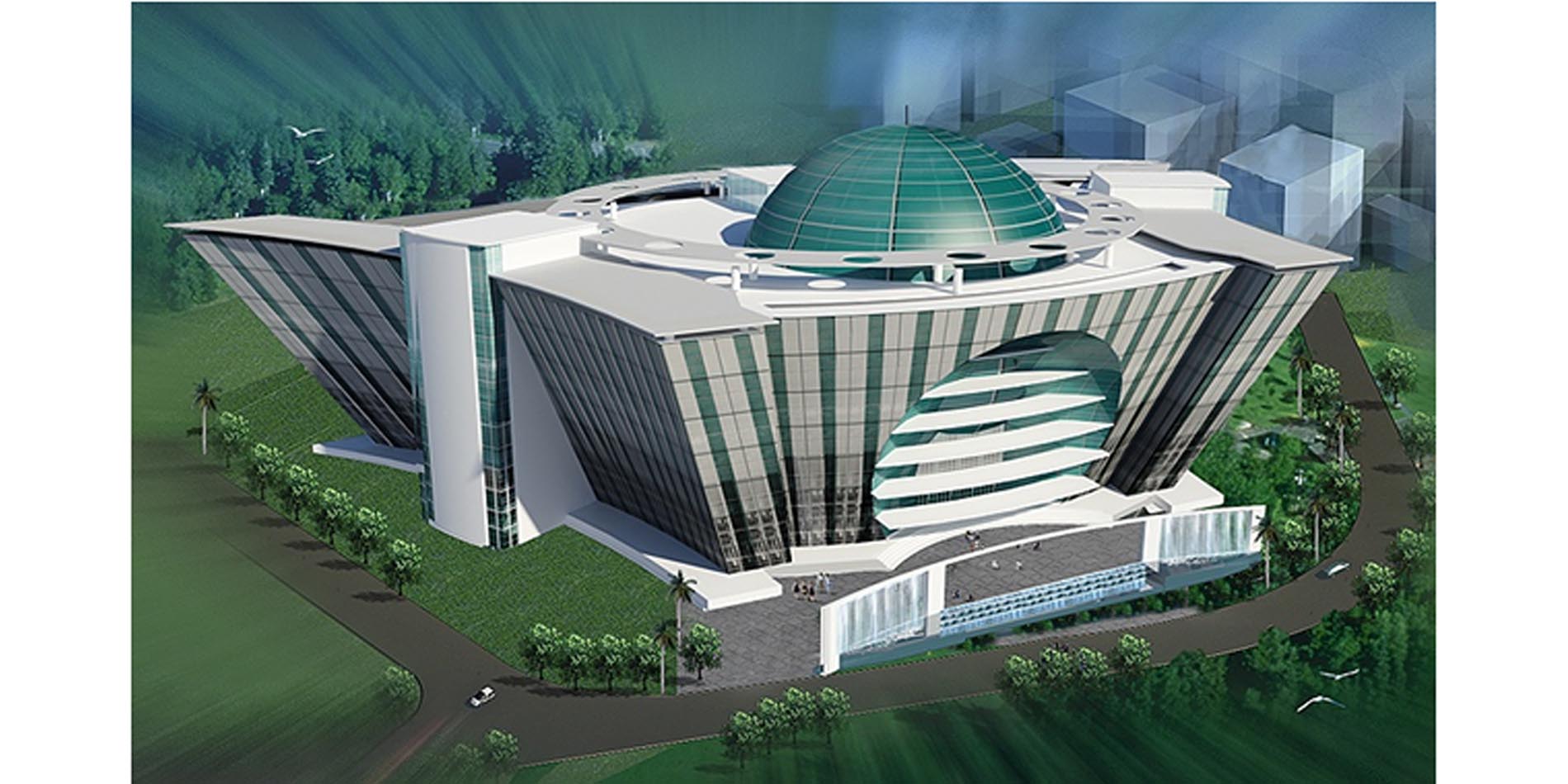The broadband strategy is focusing on connecting virtually every building and village across the Sultanate to national broadband infrastructure by 2040
Oman is planning to take major steps to create smart cities by introducing information technology in every walk of life, which will help the urban population immensely. The country’s Information Technology Authority (ITA) is developing a long-term strategy until 2030 for creating smart cities. The ITA will provide policies and regulations based on its seven pillars, which include security, infrastructure, e-government and the development of society. The authority will also look into new job opportunities available with the adoption of artificial intelligence, which is part of a smart cities.
The plan for smart cities include a logistics city near Muscat, Duqm, and Madinat Al Irfan, which includes Oman Convention and Exhibition Centre. The responsibility to deliver services within a smart city lies with government agencies. In a prototype smart city, municipal services such as lighting, traffic lights, garbage disposal and building management will be driven by technology.
Oman Broadband Company (OBC) will provide the infrastructure for these cities, while the major telecom service providers will play an important role in building other infrastructure needed for developing smart cities. The Sultanate has several advantages in developing smart cities, which include a well-developed telecommunication infrastructure base and high levels of smartphone penetration.
Broadband strategy
The national broadband strategy, which include building a nation-wide fibre optic backbone and strengthening of government network, is also expected to support the formation of smart cities to a large extent. TRA has launched the national broadband strategy way back in 2010, with the ultimate aim of introducing a broadband connection into every home and business.
The broadband strategy is focusing on connecting virtually every building and village across the Sultanate to national broadband infrastructure by 2040. Accordingly, the fibre optic coverage is targeted to extend to 80 per cent by 2020.
The National Broadband Strategy aims to overcome the low levels of fixed broadband penetration within Oman, and the challenges presented with the rapid expansion of mobile broadband network in an often geographically-challenging landscape.
This involves the requirement to build new towers and the scarcity of available spectrum, in addition to the high cost of broadband in relation to the gross domestic product when compared with the rest of the Middle East and the world. The main objectives of National Broadband Strategy are to provide access for every citizen and resident in Oman to high speed broadband at affordable prices, provide access to all enterprises in Oman world-class broadband services to enable companies to effectively compete at the international level and providing rural communities with access to broadband services to bridge the digital gap.
As part of a major strategy, Oman Broadband Company (OBC), which started operation in 2014, has succeeded in rolling out fibre optic infrastructure across Muscat city with a view to ramping up broadband-based Internet penetration. The fibre optic infrastructure is being made available to three major service providers – the majority state-owned Oman Telecommunications Company, Omani Qatari Telecommunications Company (Ooredoo Oman) and Awasr. Oman Broadband Company has provided additional fibre optic connection to 11,000 people in the first ten months of 2016. As per the plan, as many as 90 per cent of Muscat will be covered with fibre optic connectivity within two years.
Enhanced connectivity
Rural areas and other remote locations, home to around 23 per cent of the national population, will be covered in different phases of the multi-stage programme. The speed of Internet services is expected to improve in the future as telecom firms are switching over to high-speed fibre optic cable networks for the next phase of long-term development, which is mainly supported by OBC.
OBC is has tied-up with various ministries and government-run utilities, notably the Public Authority for Electricity and Water, Ministry of Regional Municipalities and Water Resources, Haya Water, for laying cables in conjunction with the trenching and pipe-laying programmes of the latter entities.
All of these initiatives are supporting the telecommunications sector in the Sultanate, which will help save money and effort and time taken for setting up a business unit. In fact, the Sultanate has been on a journey towards digital transformation for over a decade now by implementing e.oman strategy which ITA is responsible for implementing in cooperation with the government and private sectors, spurred by the realisation that technology can have a profound effect on all aspects of the society. ITA believe that digital and innovative solutions can help in transforming the country into a knowledge-based economy, leveraging technology as a key enabler, and as a means for economic diversification and sustained development.
The high-speed, fibre-based fixed-broadband service is set to grow strongly as Oman Telecommunications Company, Ooredoo Oman, and the government-backed Oman Broadband Co have been expanding their deployment of fibre optic networks. As far as Omantel and Ooredoo are concerned, a strong growth in broadband data service has compensated for a fall in revenue from short message service (SMS) and international calls provided by multinational giants like whatsapp.
According to a report on the telecommunication sector released by Ovum, the number of optic fibre subscriptions in Oman will reach 99,000 by 2020, giving it a 32.2 per cent share of the fixed broadband market by subscriptions in 2020. However, copper-based digital subscriber line (DSL) will continue to be the main technology for fixed broadband in Oman, accounting for 43.8 per cent of fixed broadband subscriptions in 2020. The country’s internet penetration and speed received a shot in the arm with the launch of Awasr – the Sultanate’s first specialised high-speed fire internet provider. The broadband fibre optic packages offered by Awasr aim to support the government’s vision in reinforcing the Sultanate’s digital infrastructure and offering high-speed Internet services.
Awasr follows Oman Broadband Company in providing broadband connections to homes in different areas. OBC has built optical fibre network in cooperation with Haya Water. Meanwhile, the mobile subscription in the Sultanate reached 7.05 million at the end of April, registering a 2.7 per cent growth over the same period of 2016. The total number of fixed telephone lines was 457,022, registering a growth of 8.2 per cent. Active mobile broadband subscriptions reached 4.1 million, up 4.2 per cent.
As demand for mobile and fixed broadband services continues to rise across the Sultanate, the two leading telecom services providers are investing heavily in network expansion and modernisation. Of late, Oman Telecommunications Company has entered into an agreement with the Sultanate’s leading airports in Muscat, Salalah, Sohar, and Duqm to become the main network and smart solutions provider.
This partnership aims at enhancing the performance of airports across the Sultanate, in all aspects especially safety and security, said a release from the telecom company. Airports in Oman are connected to each other by a standardised network of fixed mobile telecommunications services, broadband internet services, and fibre optics provided by Omantel.
Omantel offers the latest technical solutions and telecommunication services for a number of institutions such as the General Authority of Civil Aviation, Oman Airports Management Company (OAMC), Oman Air, as well as to small and medium enterprises operating within the airports. Upon completion, the project will allow for advanced fixed telecommunication capabilities and connectivity for all airports throughout the Sultanate and will provide greater efficiency and convenience for passengers and airport staff.
As per the agreement, Omantel will offer high–quality services in the air transport sector, including advanced mobile services and internet services. Additionally, the company will provide connectivity with ISDN technology to thousands of users, as well as Wi-Fi services for travellers and airport staff.







